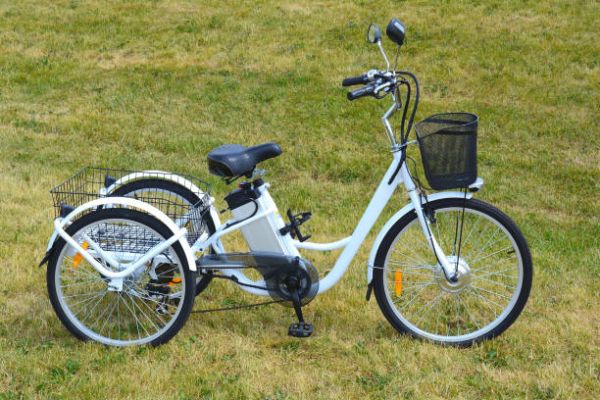Battery Management System (BMS) for Electric Tricycle: Ensuring Optimal Performance and Safety
Introduction:
In recent years, electric tricycles have gained popularity as a sustainable and efficient mode of transportation. These vehicles are powered by rechargeable batteries, which require an effective system to manage and monitor their performance. This is where the Battery Management System (BMS) comes into play. In this article, we will explore the importance of BMS for electric tricycles and how it ensures optimal performance and safety.
1. What is a Battery Management System (BMS)?
A Battery Management System (BMS) is an electronic system that manages and monitors the performance of a battery pack. It ensures the safe and efficient operation of the battery by monitoring various parameters such as voltage, current, temperature, and state of charge. The BMS also protects the battery from overcharging, over-discharging, and overheating, which can lead to reduced battery life and safety hazards.
2. Key Components of a BMS
A BMS consists of several key components that work together to manage the battery pack. These components include:
- Cell Monitoring Unit (CMU): The CMU measures the voltage and temperature of individual battery cells and relays this information to the BMS.
- Battery Control Unit (BCU): The BCU processes the data received from the CMU and makes decisions on how to control the battery pack, such as balancing the cells or activating safety measures.
- State of Charge (SOC) Estimation: The BMS uses sophisticated algorithms to estimate the battery's state of charge, providing accurate information about how much energy is remaining.
- Safety Circuits: The BMS includes safety circuits that protect the battery from overcharging, over-discharging, and overheating, ensuring safe operation.
3. Balancing Battery Cells of a BMS
One of the crucial functions of a BMS is to balance the voltage of individual battery cells. Due to variations in manufacturing and usage, some cells may have higher or lower voltage levels than others. If left unbalanced, these cells can lead to reduced battery capacity and performance. The BMS actively monitors the voltage of each cell and redistributes energy between them to ensure consistent performance and maximize battery life.
4. Overcharge and Overdischarge Protection
Overcharging and over-discharging are two common factors that can significantly degrade the performance and lifespan of a battery. The BMS continuously monitors the battery's voltage and current to prevent these harmful conditions. When the battery approaches a high or low voltage threshold, the BMS takes appropriate action to prevent overcharging or over-discharging. This protection mechanism not only extends the battery life but also ensures safe operation.
5. Temperature Monitoring and Thermal Management of a BMS
Temperature plays a crucial role in the performance and longevity of a battery. High temperatures can accelerate chemical reactions within the battery, leading to degradation and reduced capacity. The BMS monitors the temperature of the battery pack and activates cooling or heating systems as necessary to maintain an optimal temperature range. By controlling the temperature, the BMS helps to maximize the battery's lifespan and performance.
6. Fault Detection and Diagnostics of a BMS
The BMS is equipped with diagnostic capabilities to detect and identify faults or abnormalities within the battery pack. It can detect issues such as cell imbalance, high internal resistance, or faulty components. By providing real-time information about the battery's health, the BMS allows for proactive maintenance and troubleshooting, minimizing the risk of unexpected failures and improving overall reliability.
7. Communication and Data Logging of a BMS
Modern BMSs are often equipped with communication interfaces that allow them to interact with external devices, such as vehicle control systems or charging stations. These interfaces enable data exchange and control commands, facilitating seamless integration and interoperability. Additionally, the BMS logs crucial data about the battery's performance, allowing for post-analysis and optimization of the system.
8. Impact on Performance and Range of a BMS
A well-designed BMS can have a significant impact on the performance and range of an electric tricycle. By ensuring balanced cells, preventing overcharging and over-discharging, and optimizing temperature management, the BMS helps to maintain the battery's capacity and energy efficiency. This, in turn, translates to improved performance, extended range, and a better overall driving experience for the tricycle user.
9. Safety Considerations of a BMS
Safety is a critical aspect when it comes to battery-powered vehicles. The BMS plays a vital role in ensuring the safe operation of electric tricycles by actively monitoring and protecting the battery from potentially dangerous conditions. By preventing overcharging, over-discharging, and overheating, the BMS reduces the risk of battery failures, thermal runaway, and fire hazards, providing peace of mind to both the vehicle user and the general public.
10. Conclusion
A Battery Management System (BMS) is an essential component of an electric tricycle, responsible for managing and monitoring the battery's performance. With its ability to balance cells, protect against overcharging and over-discharging, optimize temperature, and provide diagnostics, the BMS ensures optimal performance, extended battery life, and enhanced safety. As electric tricycles continue to grow in popularity, the importance of a reliable and efficient BMS cannot be overstated.

